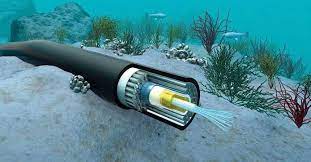The laying of submarine cables mainly includes three stages of cable route survey and cleaning, laying of submarine cables, and flushing and burying protection. When laying the cable, control the water inlet angle and laying tension of the cable by controlling the sailing speed of the laying vessel and the cable release speed to avoid damage to the cable due to too small bending radius or excessive tension. Among them, when laying in the shoal section, the cable-laying vessel stops at a distance of 4.5 kilometers from the coast, and is towed by the tractor on the shore to pull the cable placed on the floating bag ashore. After the cable is ashore, the floating bag is removed to make the cable Sink to the bottom of the sea. When laying in the deep sea section, the cable-laying vessel releases the cables, and uses underwater monitors and underwater remote control vehicles to continuously monitor and adjust to control the forward speed and direction of the laying vessel and the speed of laying cables to avoid uneven places. And rocks to avoid damaging the cable.

In the final stage of construction, the main purpose is to deeply bury the submarine cable, reduce the impact of the complicated marine environment on the submarine cable, and ensure the safety of operation. In sandy and silt areas, use high-pressure flushing to create a trench about 2 meters deep, bury the cable in it, and cover it with the sand next to it;





